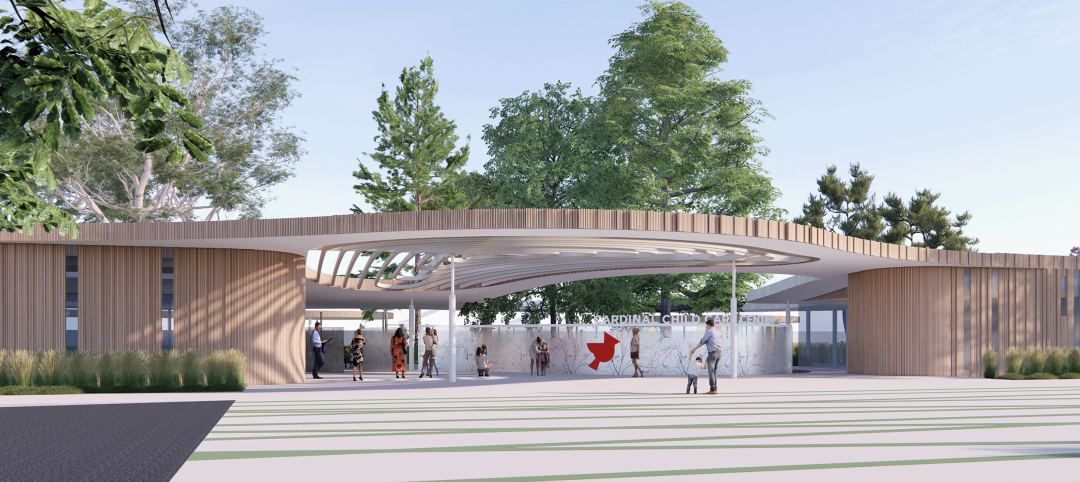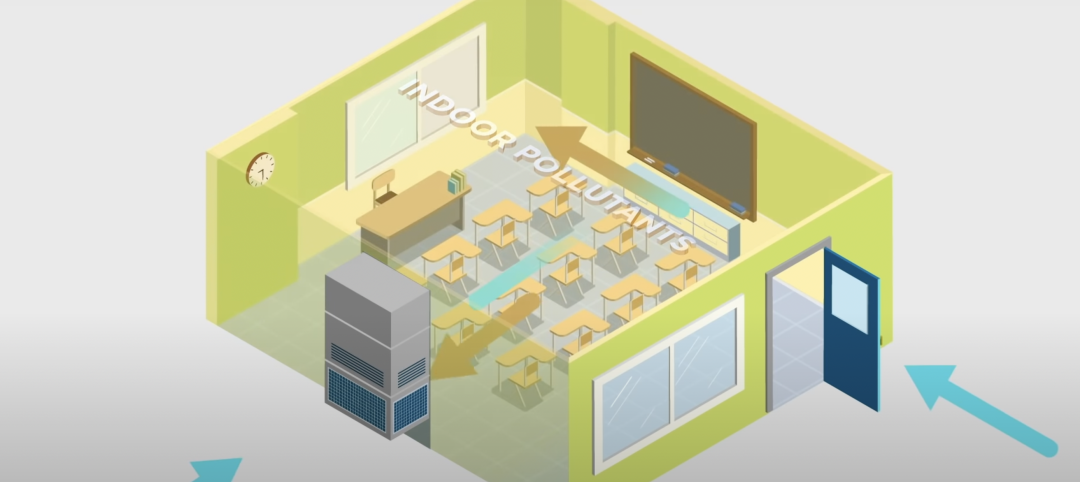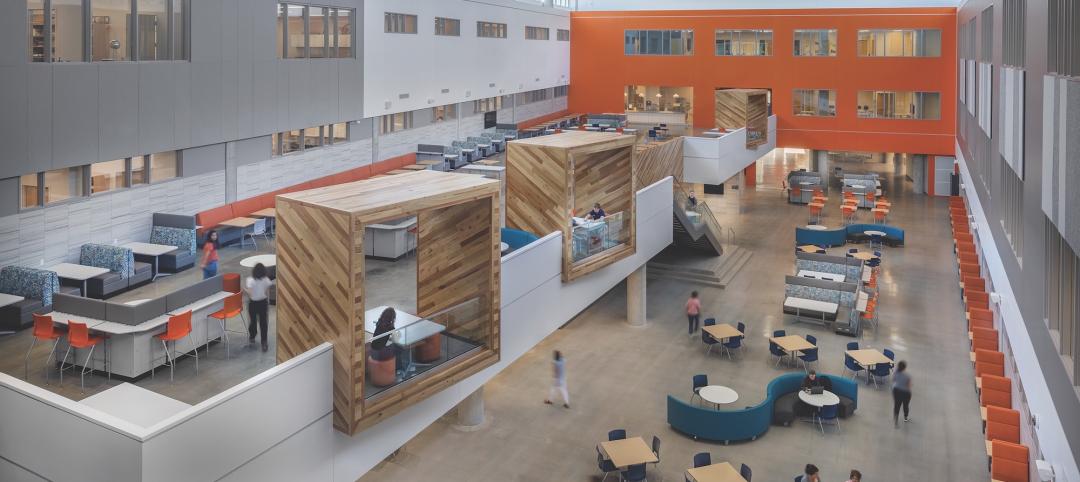Forty-five percent of the country's elementary, middle, and high schools were built between 1950 and 1969 and will soon reach the end of their usefulness, according to the 2005–2008 K-12 School Market for Design & Construction Firms, published by ZweigWhite, a Massachusetts-based market-research firm.
Almost 30% of U.S. schools were built before 1950 and need major modernization because enrollments continue to increase. Between 1988 and 2004, the number of students in public and private K-12 schools increased almost 20%, from 44 million to 54 million, according to the National Center for Education Statistics. That trend is expected to continue as new immigrants and the children of baby boomers enter secondary schools.
According to ZweigWhite, increasing numbers of school districts are demanding new facilities in response to enrollment growth. American School & University magazine estimates $89.8 billion in K-12 construction will be completed by 2006. Of that, $56.9 billion will be new work.
"It's definitely one of the stronger markets we've seen for firms," with Florida and California leading the way, said Christopher Klein, managing editor of the report and a ZweigWhite principal. "Of the 25 different market sectors we rank in our annual AEC industry outlook, [schools] ranked just behind healthcare and higher education in the top three."
Market trends providing unique opportunities in K-12 construction include:
-
New financing mechanisms, such as public-private partnerships
-
More technologically advanced and collaborative learning schools
-
Greater use of sustainable building designs
-
Designing schools that also serve as community centers
-
Improvements in school security
New finance mechanisms. To finance new construction and major renovations, some school districts are bringing in private investors through lend-lease agreements. These deals create public/private partnerships that are not subject to state requirements for multiple contractors and open bidding. School districts can also circumvent bonding limits and exempt building projects from federal tax using these financing instruments.
Niagara Falls High School became the first privately financed, privately managed school construction project in New York State last year. The school district currently leases the school for $4.8 million a year from private partner Honeywell International. Ownership transfers to the school district in 27 years.
"It's something that's occurring as a novelty in the marketplace right now," said Klein. "The driver, of course, is getting funding to build these new facilities that otherwise wouldn't be there."
Klein says new funding is also coming from foundations, such as the Bill and Melinda Gates and Carnegie foundations. These institutions donate large sums to create high-tech environments in even the lowest grades.
Technology improvements. The ZweigWhite report predicts technology will dominate new school construction, with cost-control measures such as distance education over the Internet, and basic education programs delivered through computers, networks, and software. Smaller class sizes and changes in teaching methods (such as providing alcoves or flexible spaces with fewer hard walls) will continue the trend of smaller groups, collaborative instruction, and more sustainable designs.
Sustainable design or green building elements that firms can use in K-12 schools include designs that reduce the reliance on automobiles, use alternate energy sources, and orient school buildings to take advantage of sunlight. The number of school projects registered under the U.S. Green Building Council's LEED rating program grew from 52 in 2003 to 124 in April 2005.
The most important of the environmental elements addressed by sustainable design for schools, according to ZweigWhite, is indoor air quality. Recent lawsuits claimed that mold had sickened children in two Florida school districts.
"There's now a pretty decent awareness among architects, builders, and facilities managers of sustainable design in K-12 construction," Klein said. "I suspect you will see that awareness broaden out as new projects continue to be built and the idea of sustainable design reaches the school boards and the people running schools."
Community use of schools. More community members—such as theater groups and senior citizens—are using K-12 schools for everything from libraries to athletic, computer, and art facilities. Opening up K-12 schools for use by community groups is helping to broaden support for school bond measures, particularly among voters who do not have children in schools. Firms will need to design and create structures for more intense use and flexibility, the report claims.
Security demands. At the same time schools are opening their doors to greater community use, there is equally strong emphasis to build more secure schools in the face of Columbine-like school violence and terrorism. Firms will have to balance the openness of a community center with design concepts like territorial reinforcement (giving users a sense of control), natural access control (denying access to crime targets and creating a perception of risk in offenders), and target hardening (dead bolts and other visible security features).
"There is steam left in (the growing school market)," says Klein. "All the drivers point to major construction, especially in the 9–12 market."
Related Stories
K-12 Schools | Dec 20, 2022
Designing an inspiring, net zero early childhood learning center
LPA's design for a new learning center in San Bernardino provides a model for a facility that prepares children for learning and supports the community.
Sponsored | Resiliency | Dec 14, 2022
Flood protection: What building owners need to know to protect their properties
This course from Walter P Moore examines numerous flood protection approaches and building owner needs before delving into the flood protection process. Determining the flood resilience of a property can provide a good understanding of risk associated costs.
HVAC | Dec 13, 2022
Energy Management Institute launches online tool to connect building owners with HVAC contractors
The National Energy Management Institute Inc. (NEMI) along with the Biden administration’s Better Air in Buildings website have rolled out a resource to help building owners and managers, school districts, and other officials find HVAC contractors.
Education Facilities | Nov 30, 2022
10 ways to achieve therapeutic learning environments
Today’s school should be much more than a place to learn—it should be a nurturing setting that celebrates achievements and responds to the challenges of many different users.
K-12 Schools | Nov 30, 2022
School districts are prioritizing federal funds for air filtration, HVAC upgrades
U.S. school districts are widely planning to use funds from last year’s American Rescue Plan (ARP) to upgrade or improve air filtration and heating/cooling systems, according to a report from the Center for Green Schools at the U.S. Green Building Council. The report, “School Facilities Funding in the Pandemic,” says air filtration and HVAC upgrades are the top facility improvement choice for the 5,004 school districts included in the analysis.
Energy-Efficient Design | Nov 14, 2022
How to achieve net zero energy in five steps
Martine Dion and Ethan Seaman share net zero energy best practices with owners and developers.
K-12 Schools | Nov 1, 2022
Safety is the abiding design priority for K-12 schools
With some exceptions, architecture, engineering, and construction firms say renovations and adaptive reuse make up the bulk of their work in the K-12 schools sector.
BAS and Security | Oct 19, 2022
The biggest cybersecurity threats in commercial real estate, and how to mitigate them
Coleman Wolf, Senior Security Systems Consultant with global engineering firm ESD, outlines the top-three cybersecurity threats to commercial and institutional building owners and property managers, and offers advice on how to deter and defend against hackers.
Education Facilities | Oct 13, 2022
A 44-acre campus serves as a professional retreat for public-school educators in Texas
A first-of-its-kind facility for public schools in Texas, the Holdsworth Center serves as a retreat for public educators, supporting reflection and dialogue.
K-12 Schools | Sep 21, 2022
Architecture that invites everyone to dance
If “diversity” is being invited to the party in education facilities, “inclusivity” is being asked to dance, writes Emily Pierson-Brown, People Culture Manager with Perkins Eastman.















